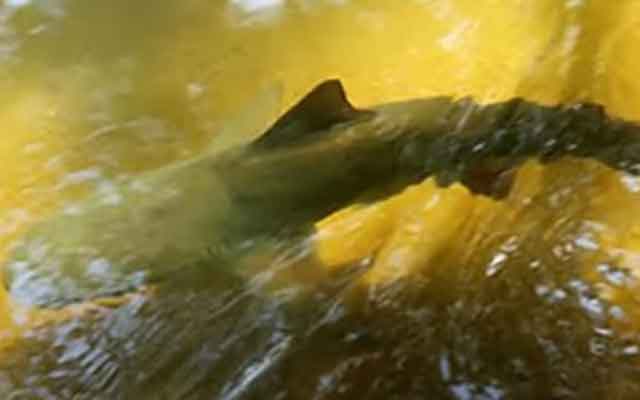Jaws' "Bruce": The Story of the 1970s Mechanical Shark
Behind the Scenes: The Animatronic Shark of the Movie Jaws
Reading time : 1 minute,
Discovery Chepe Id-692-FAR
Published in
05-09-2025

Image of the mechanical shark shared on social media by an unknown author. The original film is owned by Universal Pictures.
In 1975, Steven Spielberg's film Jaws introduced audiences to a terrifying great white shark, brought to life through groundbreaking practical effects. The mechanical shark, affectionately nicknamed "Bruce," became an iconic symbol of cinematic innovation. This article delves into the details of how, when, and who was responsible for creating this legendary animatronic creature.
How Was the Mechanical Shark Constructed?
The creation of "Bruce" was a monumental task, as a full-sized mechanical shark had never been built before. The shark measured 25 feet in length and was constructed using a steel skeleton covered with polyurethane foam and fiberglass skin. The internal mechanisms included pneumatic and hydraulic systems that allowed movement of the jaws, eyes, and fins. Three versions of the shark were built: one that moved from left to right, another from right to left, and a third mounted on a sled for frontal shots. Each model cost approximately $150,000 to build.
When Was the Mechanical Shark Built?
The design and construction of the mechanical shark took place between November 1973 and April 1974. The sharks were fabricated at Rolly Harper's Motion Picture & Equipment Rental in Sun Valley, California. After completion, they were transported to Martha's Vineyard, Massachusetts, where filming began in May 1974.
Who Were the Key Figures Behind the Shark's Creation?
Bob Mattey: A veteran special effects artist known for his work on Disney's 20,000 Leagues Under the Sea, Mattey supervised the mechanical construction of the shark.
Joe Alves: The production designer for Jaws, Alves was instrumental in the conceptual design of the shark and collaborated closely with Mattey during its development.

The Mechanical Shark of Jaws: How It Worked and Its Failures
Challenges Faced During Production
Filming with the mechanical shark presented numerous challenges. The saltwater environment caused frequent malfunctions in the shark's pneumatic systems, leading to delays and forcing Spielberg to minimize the shark's on-screen appearances. This limitation inadvertently increased the film's suspense, as the unseen threat heightened audience fear.
The Legacy of "Bruce"
Despite the difficulties, the mechanical shark's impact on cinema is undeniable. "Bruce" set a new standard for practical effects and inspired future filmmakers to push the boundaries of on-screen realism. One of the original sharks was restored and is now displayed at the Academy Museum of Motion Pictures in Los Angeles.

Further Reading
For more in-depth information on the making of Jaws and the mechanical shark, visit the following resources:
The Daily Jaws: Why Bruce the Shark from Jaws is the Greatest Practical Effect Ever Made
Bold Entrance: Remembering Bruce, the Malfunctioning Animatronic Shark That Made Jaws a Horror Classic
D23: Bob Mattey, Master of Mechanical Magic

Image of the mechanical shark shared on social media by an unknown author. The original film is owned by Universal Pictures.

Photo: boldentrance.com
See Also
Discovery Chepe
Most read...















